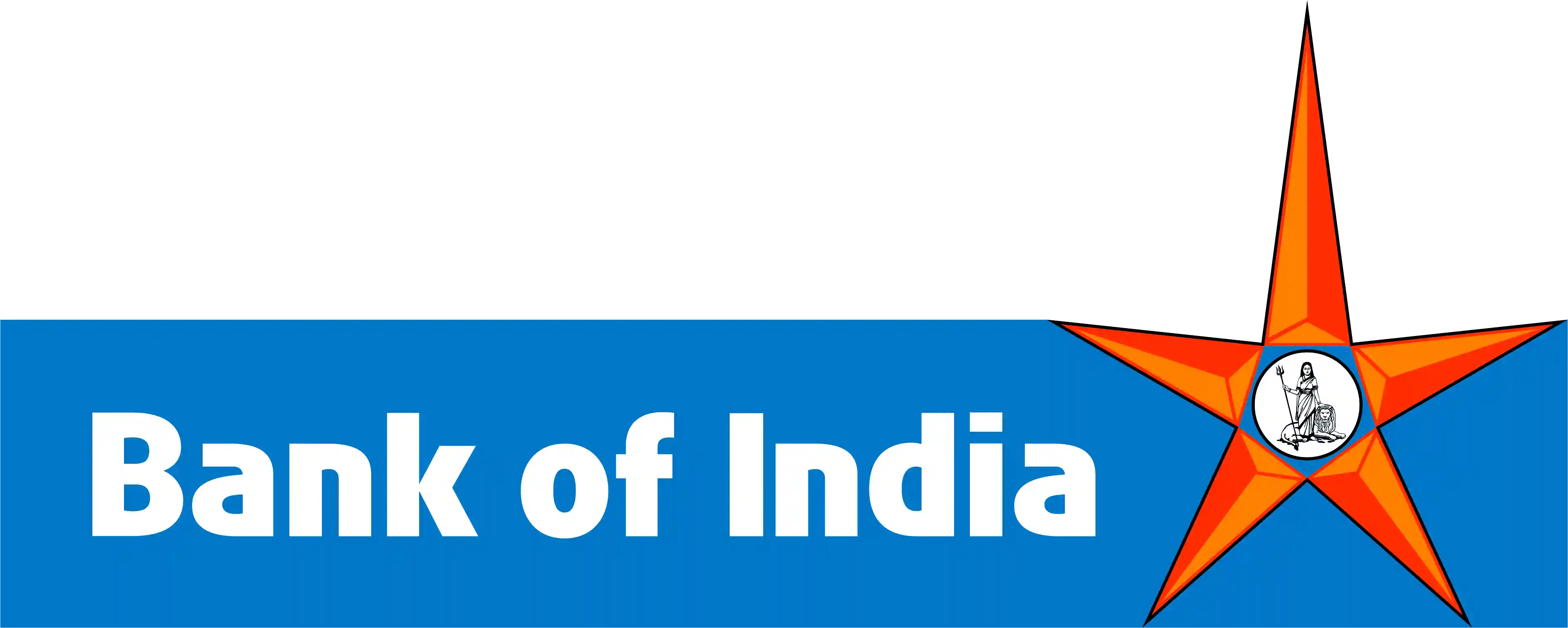Table of Content:
- Nationalised Banks in India #1: What Are Nationalised Banks In India?
- Nationalised Banks in India #2: How Nationalised Banks Benefited India?
- Nationalised Banks in India #3: List of Nationalised Banks In India
- Nationalised Banks in India #4: State Bank of India (SBI)
- Nationalised Banks in India #5: Indian Bank
- Nationalised Banks in India #6: Central Bank of India
- Nationalised Banks in India #7: Union Bank of India
- Nationalised Banks in India #8: Bank of India
- Nationalised Banks in India #9: Indian Overseas Bank
- Nationalised Banks in India #10: Canara Bank
- Nationalised Banks in India #11: Punjab National Bank (PNB)
- Nationalised Banks in India #12: Punjab & Sind Bank
- Nationalised Banks in India #13: Bank of Baroda
- Nationalised Banks in India #14: Bank of Maharashtra
- Nationalised Banks in India #15: UCO Bank
Following India's independence, the government implemented various measures to enhance the country's economic growth, with one of the key initiatives being the establishment of the RBI to regulate the banking sector. At that time, State Bank of India was the sole major government-owned bank. To cater to the requirements of the Indian economy, the government nationalized the banks in 1969 and 1980, thereby acquiring ownership of banks that were previously privately owned. These nationalised banks in India currently comprise the bulk of the Indian banking system.
India has a total of 12 nationalized banks as of today. Let’s find out what is a nationalised bank and which ones belong to the list of nationalised banks in India(2022 & 2023 updated).
What Are Nationalised Banks In India?
The banks in which the Government of India has more than fifty percent shareholding are called nationalised banks. RBI (Reserve Bank of India) is the governing body that manages all of the 12 nationalized banks.
How Nationalised Banks in India Benefit Our Country?
Here are a few ways how nationalised banks in india 2023 helps:
It prevented the monopoly of the banking systems controlled by corporate families in India.
These banks reduced regional imbalance and helped in more equitable regional growth apart from Northern & Western India
Nationalised banks in India improved the working conditions of employees in the banking sector
It protected the public interest from unhealthy competition among industrialists
It centralised the management and provided uniform services throughout India
Nationalised banks in India lead to the use of profits earned by banking enterprises for public and economic policies of the Government
It made funds available for agriculturists and the core sector of steel and coal.
It increased the number of offices in rural and semi-urban areas.
It developed banking habits in people
It helped in deposit mobilisation with the expansion of personal loans
Also Read: Factors To Consider Before Choosing A Bank For Home Loan
List of Nationalised Banks In India
There are a 12 total nationalised banks in India(2022 & 2023 updated list):
1. State Bank of India
2. Indian Bank
3. Central Bank of India
4. Union Bank of India
5. Bank of India
6. Indian Overseas Bank
7. Canara Bank
8. Punjab National Bank
9. Punjab & Sind Bank
10. Bank of Baroda
11. Bank of Maharashtra
12. UCO Bank
Let’s discuss more about these nationalised banks list in-depth:
1. State Bank of India (SBI)

As per the list of nationalised banks in India 2023, State Bank of India has a 23% of market share in terms of assets - making it the biggest nationalised bank in India. This one of the nationalised banks in India holds a one-fourth share in the total deposits and loans markets. SBI was merged with its five associate banks, thus making it the largest branch network in India.
The non-banking subsidiaries of SBI in India are:
- SBI Cards & Payments Services Pvt. Ltd.
- SBI Pension Funds Pvt. Ltd.
- SBI Global Factors Ltd.
- SBI Capital Markets Ltd.
- SBI Funds Management Pvt. Ltd.
- SBI General Insurance Company Limited
- SBI DFHI Ltd.
SBI currently offers home loans at 8.85% interest rates. Here are the other home-related loan interest rates offered by the bank.
Here’s the address to the SBI office:
State Bank of India,
Central Office, Chairman’s Secretariat,
P.B. No.12, Nariman Point
Mumbai
Maharashtra
Pincode: 400021
2. Indian Bank

Indian Bank was founded in 1907, and was merged with Allahabad Bank in February 2021. As per the nationalized banks in india, second is the Indian Bank that offers general banking services such as deposit accounts, debit and credit cards, net banking, loans, investment, and more.
The following subsidiary companies of this one of the nationalised banks in India offer various other services:
- IndBank Housing Ltd
- IndBank Merchant Banking Services Ltd.
- IndFund Management Ltd.
Indian Bank currently offers home loans at an interest rate between 6.50% to 7.4% per annum and a processing fee of 0.23% of the loan amount. This interest rate applies to Indian residents and NRIs. Its tenure can be extended up to 30 years.
Here’s the address to Indian Bank’s office:
Indian Bank Building
P.B. No. 1384, 31
Rajaji Road,
Chennai
Tamil Nadu
Pincode: 600001
3. Central Bank of India

Sir Sorabji Pochkhanawala established the Central Bank in 1911. This is one of the nationalised banks in India that played a crucial role in creating India’s first exchange bank - the Central Exchange Bank of India.
Central Bank of India has close to 4000 branches, 3600 ATMs and ten satellite offices. It offers a wide range of banking services like cash management, debit and credit cards, transfer of funds and much more.
Central Bank of India currently offers home loans at an interest rate of 8.20% per annum onward and a processing fee of 0.50% of the entire loan amount (maximum INR 20,000+ taxes).
Here’s the address to Central Bank’s head office:
Central Office
Chander Mukhi, Nariman Point
Mumbai
Maharashtra
Pincode: 400021
Don’t Miss This Update: Banks Increase Home Loan Interest Rate After Repo Rate Hike
4. Union Bank of India

Here is another important one from the Indian nationalised bank list 2023 which surprisingly not many know but the Father of the Nation, Mahatma Gandhi inaugurated it in 1919 i.e., the Union Bank of India. The Government of India recognized it as a nationalised bank in India in 1969.
Union Bank of India was merged with Andhra Bank and Corporation Bank in 2020 and has subsidiaries in Dubai, Sydney, Belgium, Hong Kong, and the United Kingdom.
Union Bank of India currently offers home loans at an interest rate of 9% per annum onward and a processing fee of 0.50% of the loan amount
Here’s the address to Union Bank of India’s head office:
Union Bank Building
Central Office, 239, Backbay Reclamation,
Post Box No. 93A, Nariman Point,
Mumbai
Maharashtra
Pincode: 400021
5. Bank of India

Thiru M. Chidambaram Chettyar established Indian Overseas Bank in 1937. Among the nationalised banks in India, Indian Overseas Bank promoted foreign exchange operations and overseas banking transactions.
Bank of India currently offers home loans at an interest rate of 8.85% per annum onward and a processing fee of 0.25% of the loan amount. The loan’s tenure can be extended up to 30 years.
Here’s the address to the Bank of India’s office:
Express Towers, Nariman Point,
Mumbai
Maharashtra
Pincode: 400021
Check This Out: Hidden Charges United In A Home Loan
6. Indian Overseas Bank

Thiru M. Chidambaram Chettyar established Indian Overseas Bank in 1937. It promoted foreign exchange operations and overseas banking transactions.
Nationalised in 1969, the services offered by the bank include general banking and financial services such as deposit schemes, remittances, trade finance, loans, etc. This nationalised bank in India is the only Indian-origin bank that has been offering its services in the Royal Kingdom of Thailand since 1947. It has six foreign branches and a representative office.
Union Bank of India currently offers home loans at an interest rate of 9.35% per annum onward and a processing fee of 0.50% of the loan amount.
Here’s the address of Indian Overseas Bank’s office:
Central Office
762, Anna Salai, P.B. No. 3765
Chennai
Tamil Nadu
Pincode: 600002
7. Canara Bank

Canara Bank is one of the oldest Indian government banks in the list of nationalised banks in India established in Mangalore in 1906.
Nationalised in 1969, some of the services offered by Canara Bank are corporate and NRI banking, personal banking, bank deposits, investment, loans, and more.
Canara Bank currently offers home loans at an interest rate ranging between 8.85% to 13.80% per annum and a processing fee of 0.50% (Minimum INR 1500 to Maximum INR 10,000).
Here’s the address to Canara Bank’s head office:
112, Jayachamarajendra Road
Post Box No. 6648
Bangalore
Karnataka
Pincode: 560002
8. Punjab National Bank (PNB)

It is the first Swadeshi Bank of all the nationalised banks in India that was established to help the Indians in Lahore. Nationalised in 1969, PNB offers a wide range of banking and financial services such as debit and credit cards, savings and current accounts, online banking, various types of loans, investment, trading, etc. There are around 7000 branches of PNB in India.
PNB currently offers home loans at an interest rate of 7.75% per annum onward and a processing fee of 0.35% of the loan amount. The loan's tenure can be extended up to 30 years.
Here’s the address to Punjab National Bank’s head office:
7, Bhikaji Cama Place, Africa Avenue
New Delhi
Pincode: 110066
Suggested Read: Highlights of RBI Monetary Policy 2023
9. Punjab & Sind Bank

Sir Sunder Singh Majitha, Bhai Vir Singh, and Sardar Tarlochan Singh established Punjab and Sind Bank Limited in 1908 to help the weaker sections of the society. It was renamed as Punjab & Sind Bank later.
OBC Bank and United Bank have merged with Punjab and Sind Bank. The services offered by the bank include personal banking, retail banking, corporate banking, international banking, business loans, rural banking and government business, deposits, investments, and more.
Punjab & Sind Bank currently offers home loans at an interest rate of 8.95% per annum onward and a processing fee of waiver on most home loans.
Here’s the address to Punjab & Sind Bank’s head office:
Bank House
Fourth floor, 21, Rajendra Place
New Delhi
Pincode: 110008
10. Bank of Baroda

Maharaja Sayajirao Gaekwad III established the Bank of Baroda in 1908. Nationalised in 1969, Vijaya Bank and Dena Bank merged with the Bank of Baroda in 2019.
This nationalised bank of India’s services include business banking, corporate banking, personal banking, different types of loans, investment services and more. Bank of Baroda has 100 branches and subsidiaries in 23 countries and is the third-largest public sector bank in the list of nationalised banks in India.
Bank of Baroda currently offers home loans at an interest rate of 8.50% per annum onward and a processing fee of 0.25% of the loan amount. The loan’s payment tenure can extend up to 30 years.
Here’s the address to the Bank of Baroda’s head office:
Baroda House, Mandvi
Vadodara
Gujarat
Pincode: 390006
11. Bank of Maharashtra

V.G. Kale and D.K. Sathe established the Bank of Maharashtra in 1935 and was nationalised in 1969.
The major services offered by this one of the famous nationalised banks in India are savings deposits, savings accounts, current accounts, term deposits, online trading, cards (credit and debit), internet and mobile banking, deposits, loans (education, corporate, agriculture, etc.) and more. The Government of India has 87.74% shares of the Bank of Maharashtra.
Bank of Maharashtra currently offers home loans at an interest rate of 8.40% per annum onward, and the loan’s payment tenure can extend up to 30 years.
Here’s the address to the Bank of Maharashtra’s office:
Lok Mangal
1501, Shivaji Nagar, Post Box No. 919
Pune
Maharashtra
Pincode: 411005
12. UCO Bank

Ghanshyam Das Birla established UCO Bank in 1943. The bank has over 3000 branches and 49 zonal offices in India.
UCO Bank as one of the nationalised banks in India has more than 50 centres for Foreign Exchange Business in the country. UCO Bank currently offers home loans at an interest rate of 6.90% per annum onward and a processing fee of 0.50% of the loan amount (Minimum INR 1500 to Maximum INR 15,000). The loan’s payment tenure can extend up to 30 years.
Here’s the address to UCO Bank’s head office:
10, Biplabi Trailokya Maharaj, Sarani
Kolkata
West Bengal
Pincode: 700001
Also Read: Must-Not-Miss Tips For Home Loan’s Down Payment
Conclusion
Over the years, nationalized banks in India have contributed to economic development, encouraged savings, and facilitated access to credit for various sectors of the economy, making them a crucial component of India's financial landscape.